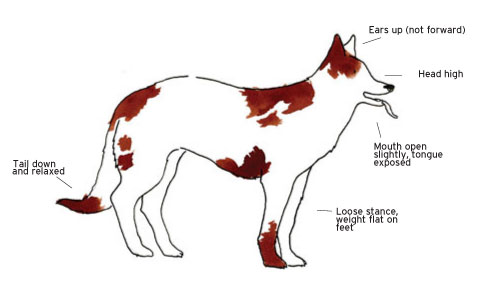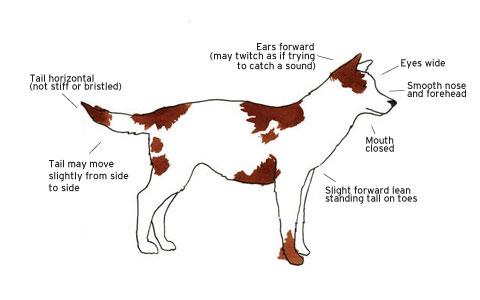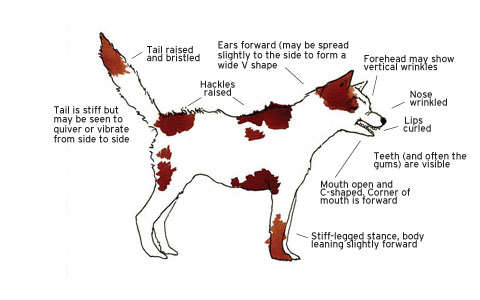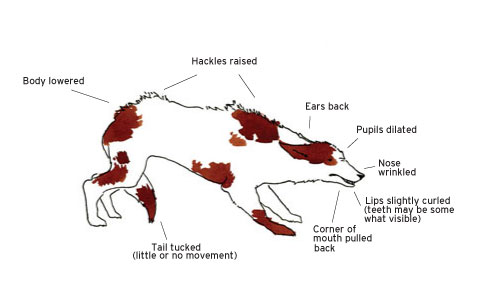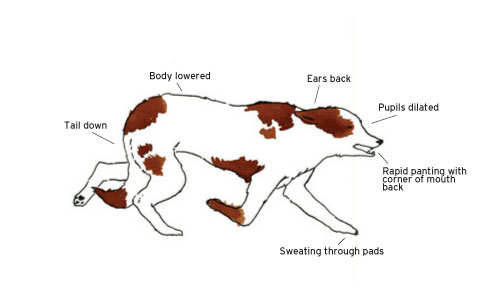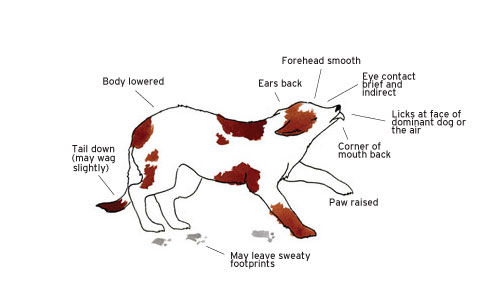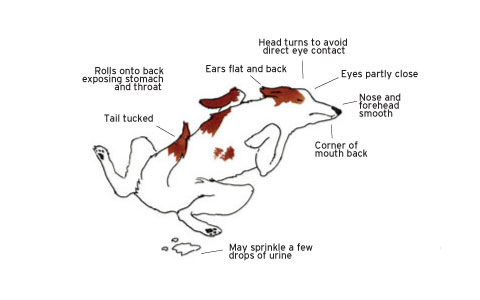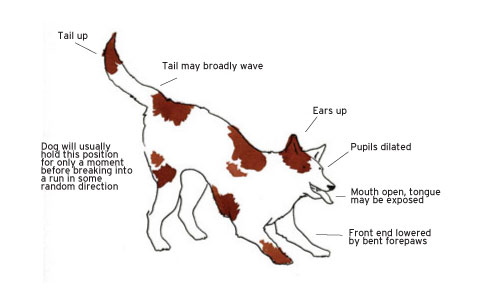

How To Read Your Dog’s Body Language
Body Language Basics
What is your dog trying to tell you? Dogs have a language that allows them to communicate their emotional state and their intentions to others around them. Although dogs do use sounds and signals, much of the information that they send is through their body language, specifically their facial expressions and body postures.
Understanding what your dog is saying can give you a lot of useful information, such as when your dog is spooked and nervous about what is going on, or when your dog is edgy and might be ready to snap at someone. You do have to look at the dog’s face and his whole body.
To help you, I have created a sort of visual version of a Berlitz phrase book to allow you to interpret the eight most important messages your dog is sending to you.
1. Relaxed Approachable
This dog is relaxed and reasonably content. Such a dog is unconcerned and unthreatened by any activities going on in his immediate environment and is usually approachable. Regardless, approach new dogs with caution and don’t attempt to rush a dog into a greeting, even if they seem relaxed.
2. Alert- Checking Things Out
If the dog has detected something of interest, or something unknown, these signals communicate that he is now alert and paying attention while he is assessing the situation to determine if there is any threat or if any action should be taken.
3. Dominant Aggressive
This is a very dominant and confident animal. Here he is not only expressing his social dominance, but is also threatening that he will act aggressively if he is challenged. Knowing whether your dog is dominant or submissive can help your relationship with your dog, and also be more aware of how other dogs around you may act.
4. Fearful and Aggressive
This dog is frightened but is not submissive and may attack if pressed. A dog will generally give these signals when he is directly facing the individual who is threatening him. Dogs who are fearful can be difficult to
5. Stressed and Distressed
This dog is under either social or environmental stress. These signals, however, are a general “broadcast” of his state of mind and are not being specifically addressed to any other individual.
6. Fearful and Worried
This dog is somewhat fearful and is offering signs of submission. These signals are designed to pacify the individual who is of higher social status or whom the dog sees as potentially threatening, in order to avoid any further challenges and prevent conflict. If your dog is always showing these symptoms, he may not feel comfortable in his environment and you may need to try a few extra tips to make your anxious dog feel relaxed.
7. Extreme Fear- Total Submission
This dog is indicating total surrender and submission. He is trying to say that he accepts his lower status by groveling before a higher ranking or threatening individual in the hopes of avoiding a physical confrontation.
8. Playfulness
Here we have the basic invitation to play. It may be accompanied by excited barking or playful attacks and retreats. This set of signals may be used as a sort of “punctuation mark” to indicate that any previous rough behaviour was not meant as a threat or challenge.
Does your dog play too rough? Read this article for some great advice on handling dogs that play too rough!
Join the newsletter and never miss out on dog content again!
"*" indicates required fields
By clicking the arrow, you agree to our web Terms of Use and Privacy & Cookie Policy. Easy unsubscribe links are provided in every email.
